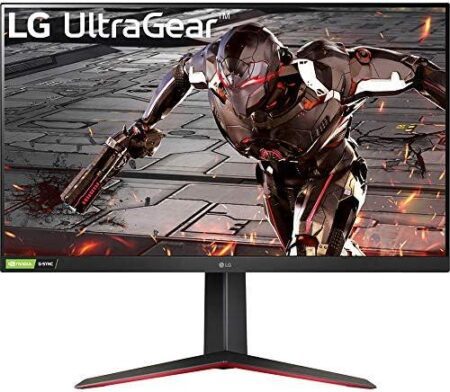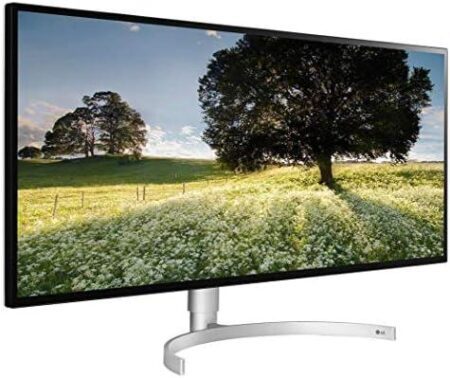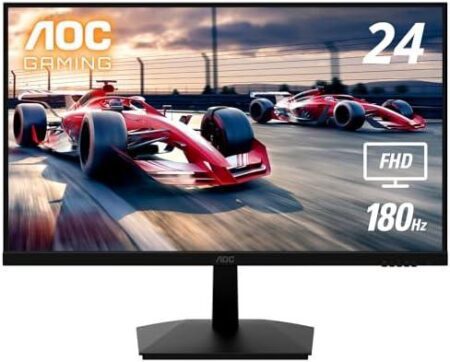
Introduction
A. Brief Overview of BenQ as a Brand
BenQ is a globally recognized technology brand known for its innovation and commitment to delivering high-quality products and solutions. With a focus on enhancing the lifestyle and productivity of consumers, BenQ offers a diverse range of products spanning multiple categories, including monitors, projectors, digital signage, and audiovisual solutions. Founded in 2001, BenQ has established itself as a leader in the display industry, consistently pushing the boundaries of technology to meet the evolving needs of consumers worldwide.
B. Introduction to the PD2705Q Monitor
The BenQ PD2705Q is a premium monitor designed for professionals, creatives, and enthusiasts seeking exceptional color accuracy, performance, and versatility. Boasting a 27-inch IPS display with a QHD (2560 x 1440) resolution, the PD2705Q delivers stunning visuals with precise color reproduction and wide viewing angles. Equipped with comprehensive connectivity options, ergonomic design features, and built-in eye-care technologies, the PD2705Q is tailored to enhance productivity, comfort, and visual experiences across various applications, including graphic design, photo editing, video production, and gaming.
C. Purpose of the Review
The purpose of this review is to provide an in-depth analysis and evaluation of the BenQ PD2705Q monitor, examining its design, performance, features, and overall user experience. By thoroughly assessing its specifications, display performance, productivity features, gaming performance, user experience, pros and cons, and value proposition, this review aims to offer valuable insights and recommendations to potential buyers. Whether you’re a professional seeking a reliable display solution for your creative work or an enthusiast looking for a versatile monitor for productivity and gaming, this review aims to help you make an informed decision about the BenQ PD2705Q.

BenQ PD2705Q Mac-Ready Monitor 27” QHD 1440p | 100% Rec.709 & sRGB | IPS | DeltaE ≤3 | Calibration Report | ICC Sync | AQCOLOR | Pantone | Ergonomic | DisplayPort | USB-C(65W) | USB Hub | Daisy Chain
Specifications
A. Display Panel Type and Resolution
The display panel type refers to the technology used to create the screen, with common types including IPS (In-Plane Switching), TN (Twisted Nematic), and VA (Vertical Alignment). Resolution indicates the number of pixels displayed on the screen, typically denoted by horizontal pixels x vertical pixels (e.g., 1920 x 1080 for Full HD). Understanding the panel type and resolution is crucial for assessing image quality and suitability for various tasks.
B. Refresh Rate and Response Time
Refresh rate measures how many times per second the display refreshes the image, usually measured in Hertz (Hz), with higher refresh rates providing smoother motion and reduced motion blur. Response time refers to how quickly pixels can change from one color to another, affecting the monitor’s ability to handle fast-moving content like gaming or video playback. Both refresh rate and response time are important considerations for assessing overall display performance.
C. Color Accuracy and Gamut Coverage
Color accuracy refers to how faithfully the monitor reproduces colors compared to their real-world counterparts, often measured using metrics like Delta E values. Gamut coverage indicates the range of colors the monitor can display within a specific color space, such as sRGB, Adobe RGB, or DCI-P3. High color accuracy and wide gamut coverage are essential for tasks like graphic design, photo editing, and content creation.
D. Connectivity Options
Connectivity options refer to the available ports and interfaces on the monitor for connecting to external devices like computers, laptops, gaming consoles, and peripherals. Common connectivity options include HDMI, DisplayPort, USB-C, and traditional USB ports. Assessing connectivity options is important for ensuring compatibility and flexibility in setting up the monitor with various devices.
E. Stand Features and Ergonomics
Stand features and ergonomics refer to the physical design of the monitor stand and its adjustability options for optimizing viewing comfort. Ergonomic features may include height adjustment, tilt, swivel, and pivot capabilities, allowing users to customize the monitor’s position according to their preferences and ergonomic needs. A well-designed stand enhances usability and reduces discomfort during prolonged usage sessions.
Design and Build Quality
A. Aesthetics and Minimalistic Design
Assessing the aesthetics of the monitor involves evaluating its visual appeal and overall design language. A minimalistic design emphasizes simplicity and elegance, often featuring clean lines, slim bezels, and a sleek profile. Aesthetically pleasing monitors can enhance the ambiance of any workspace while minimizing distractions for users.
B. Build Materials and Durability
The choice of build materials significantly influences the monitor’s durability and longevity. High-quality materials such as metal alloys or sturdy plastics contribute to a robust construction that can withstand daily use and potential wear and tear. Assessing build quality ensures that the monitor remains reliable and functional over time, offering a worthwhile investment for users.
C. Ergonomic Stand and Adjustment Options
An ergonomic stand is essential for optimizing user comfort and reducing strain during prolonged usage sessions. Adjustable features such as height adjustment, tilt, swivel, and pivot capabilities allow users to customize the monitor’s position according to their ergonomic preferences and workspace requirements. An ergonomic stand promotes healthier viewing habits and enhances overall user satisfaction with the monitor.
Display Performance
A. Image Quality Assessment
Conducting an image quality assessment involves evaluating various aspects of the displayed image, including sharpness, clarity, and overall visual fidelity. Factors such as resolution, pixel density, and panel technology contribute to image quality, impacting the clarity and detail of on-screen content across different applications and usage scenarios.
B. Color Accuracy and Uniformity
Color accuracy refers to the monitor’s ability to reproduce colors faithfully and accurately, ensuring that displayed colors match their real-world counterparts. Color uniformity assesses consistency in color reproduction across the entire screen, minimizing variations or discrepancies in color intensity and hue from one area of the display to another. Both factors are crucial for tasks like graphic design, photo editing, and content creation, where precise color representation is essential.
C. Brightness and Contrast Ratio
Brightness measures the intensity of light emitted by the monitor, affecting the overall luminance and visibility of on-screen content. Contrast ratio indicates the difference in brightness between the brightest whites and the darkest blacks displayed on the screen, influencing the depth and richness of displayed images. Achieving optimal brightness and contrast ratio ensures vibrant visuals with lifelike depth and dimensionality, enhancing the overall viewing experience for users.
D. Viewing Angles and Glare Reduction
Viewing angles determine the range from which users can comfortably view the screen without experiencing color shifts or distortion. Wide viewing angles, characteristic of IPS (In-Plane Switching) panels, ensure consistent image quality and color accuracy even when viewed from off-center positions. Glare reduction measures the effectiveness of anti-glare coatings or screen treatments in minimizing reflections and glare from ambient lighting sources, improving visibility and reducing eye strain in brightly lit environments. Evaluating viewing angles and glare reduction enhances usability and comfort, especially in collaborative workspaces or multi-user settings.
Productivity Features
A. Multi-tasking Capabilities
Assessing multi-tasking capabilities involves evaluating features that enhance productivity by allowing users to efficiently manage multiple tasks simultaneously. This may include Picture-in-Picture (PiP) or Picture-by-Picture (PbP) modes, which enable users to display content from multiple sources or applications side by side on the same screen. Multi-tasking features streamline workflow management and improve multitasking efficiency, particularly for professionals juggling multiple projects or tasks concurrently.
B. Eye-care Technologies
Eye-care technologies are designed to prioritize user comfort and reduce eye strain during prolonged usage sessions. Features such as Low Blue Light (LBL) and Flicker-Free technology minimize blue light emissions and screen flickering, respectively, to mitigate potential eye discomfort and fatigue. Eye-care technologies promote healthier viewing habits and contribute to long-term eye health, particularly for users who spend extended hours in front of the screen.
C. Built-in Features for Designers and Content Creators
Built-in features tailored for designers and content creators enhance productivity and streamline creative workflows. This may include color calibration tools, color modes (e.g., sRGB, Adobe RGB, DCI-P3), and color presets optimized for different types of content creation tasks. Additional functionalities such as on-screen rulers, grid overlays, and customizable hotkeys facilitate precision and efficiency in design and content creation projects. Built-in features empower professionals to achieve optimal results and unlock their creative potential while maximizing productivity and workflow efficiency.
Gaming Performance
A. Response Time and Input Lag
Response time and input lag are critical factors affecting gaming performance. Response time measures how quickly pixels can change colors, while input lag measures the delay between a user’s action and the corresponding on-screen response. Lower response times and input lag contribute to smoother gameplay and more responsive controls, minimizing motion blur and ensuring precise, lag-free gaming experiences.
B. Adaptive Sync Technology Support
Support for Adaptive Sync technologies such as AMD FreeSync or NVIDIA G-SYNC is essential for eliminating screen tearing and stuttering during gaming. Adaptive Sync synchronizes the monitor’s refresh rate with the GPU’s frame rate, ensuring smooth, tear-free gameplay without introducing input lag. Compatibility with Adaptive Sync technologies enhances visual fluidity and immersion, particularly in fast-paced gaming scenarios.
C. Gaming-Specific Features and Modes
Gaming-specific features and modes further enhance the gaming experience by providing customization options and optimizations tailored to gaming preferences. This may include features like Black eQualizer for improved visibility in dark scenes, Game Mode presets for optimized visuals, and customizable crosshair overlays for enhanced aiming accuracy. Gaming modes and features cater to different gaming genres and preferences, allowing users to personalize their gaming experience for maximum enjoyment and performance.
User Experience
A. Setup Process and Ease of Installation
The setup process and ease of installation are crucial aspects of the user experience, impacting initial usability and satisfaction. Assessing the setup process involves evaluating factors such as clear instructions, intuitive assembly, and compatibility with mounting options. An easy and straightforward setup ensures that users can quickly and effortlessly start using the monitor without encountering any obstacles or complications.
B. Menu Navigation and OSD Controls
Menu navigation and on-screen display (OSD) controls play a significant role in the usability of the monitor, allowing users to access and adjust various settings and configurations. Evaluating menu navigation involves assessing the intuitiveness and responsiveness of the OSD interface, including the accessibility of commonly used functions and features. Well-designed OSD controls streamline user interaction and enhance usability, facilitating quick and effortless adjustments for optimal viewing experiences.
C. Overall Usability and Comfort
Overall usability and comfort encompass various factors that contribute to the overall user experience, including ergonomic design, intuitive operation, and ergonomic comfort during prolonged usage sessions. Evaluating overall usability involves assessing factors such as ergonomic stand features, cable management solutions, and user-friendly enhancements that promote comfort and convenience. A monitor that prioritizes usability and comfort ensures that users can enjoy a seamless and comfortable experience throughout their usage, enhancing satisfaction and productivity.
Pros and Cons
A. Strengths of the BenQ PD2705Q
- Excellent Color Accuracy: The BenQ PD2705Q boasts exceptional color accuracy, making it suitable for professional design work and content creation tasks.
- Versatile Connectivity: With HDMI, DisplayPort, and USB-C ports, the PD2705Q offers versatile connectivity options, ensuring compatibility with various devices.
- Ergonomic Design: Featuring an ergonomic stand with height adjustment, tilt, swivel, and pivot capabilities, the PD2705Q offers customizable viewing positions for enhanced comfort.
- Eye-care Technologies: Built-in eye-care technologies such as Low Blue Light and Flicker-Free help reduce eye strain during prolonged usage, promoting long-term eye health.
- Sleek Aesthetics: The monitor’s sleek and modern design with slim bezels adds a touch of elegance to any workspace, enhancing the overall ambiance.
B. Areas for Improvement
- Limited Refresh Rate: The PD2705Q’s refresh rate may be considered relatively low for gaming enthusiasts seeking higher frame rates and smoother gameplay.
- Lack of HDR Support: The monitor lacks HDR support, which may be a drawback for users looking for enhanced contrast and brightness levels in HDR content.
- Menu Navigation: Some users may find the OSD controls slightly cumbersome, suggesting room for improvement in menu navigation and user interface design.
- Price Point: The monitor’s price point may be considered relatively high compared to competing models offering similar features and specifications.
- Built-in Speakers: The quality of built-in speakers could be improved, as some users may prefer external audio solutions for better sound performance.
Price and Value
A. Comparison with Similar Monitors in the Market
When compared to similar monitors in the market, the BenQ PD2705Q offers competitive features and specifications. However, its price point may vary depending on factors such as brand reputation, build quality, and additional features. Conducting a thorough comparison with similar monitors in terms of display panel type, resolution, color accuracy, connectivity options, and ergonomic design can help assess the PD2705Q’s value proposition relative to its competitors.
B. Value Proposition and Target Audience
The BenQ PD2705Q’s value proposition lies in its combination of high-quality display performance, versatile connectivity, ergonomic design, and built-in eye-care technologies. Its target audience primarily comprises professionals, creatives, and enthusiasts seeking a premium monitor for graphic design, photo editing, video production, and occasional gaming. The PD2705Q’s comprehensive feature set and ergonomic design make it an excellent investment for users prioritizing color accuracy, productivity, and user comfort. While its price may be higher than some competing models, the PD2705Q’s performance and features justify its value for discerning buyers seeking a reliable and versatile display solution.
FAQs: Your Burning Questions, Answered!
1. Does the BenQ PD2705Q come with built-in speakers?
No, it doesn’t. However, you can easily connect external speakers to the monitor if audio is a must for your work.
2. Is it VESA mount compatible?
Yes, the BenQ PD2705Q is VESA mount compatible, making it a great choice if you want to free up more desk space.
3. Can I connect my MacBook to the BenQ PD2705Q?
Absolutely! The PD2705Q’s USB-C port is Mac-friendly, and it’s compatible with most MacBook models.
4. Is this monitor good for gaming too?
While the BenQ PD2705Q is primarily designed for creative work, it can handle casual gaming. However, serious gamers might prefer a monitor with a higher refresh rate.
5. Does it come with a warranty?
Yes, the BenQ PD2705Q comes with
a three-year limited warranty. You can work with peace of mind, knowing that BenQ stands by the quality of their product.
6. Can I calibrate the monitor for color accuracy?
Yes, you can! The BenQ PD2705Q comes with a factory calibration report. However, if you want to fine-tune it to your exact specifications, you can easily calibrate it using a color calibration tool.
7. What’s the power consumption like?
The PD2705Q is an energy-efficient monitor. Its power consumption is moderate, and it comes with an Eco mode to further reduce energy usage. This is great news for both your electricity bill and the environment.
8. Is there any built-in cable management?
Yes, the monitor’s stand has a built-in cable management system, so you can keep your workspace neat and tidy.
Conclusion
A. Summary of Key Points
- Display Performance: The BenQ PD2705Q offers exceptional display performance with high color accuracy, versatile connectivity options, and ergonomic design features.
- Productivity Features: With multi-tasking capabilities, built-in eye-care technologies, and features tailored for designers and content creators, the PD2705Q enhances productivity and comfort for users.
- Gaming Performance: While not specifically designed for gaming, the PD2705Q provides decent gaming performance with its responsive display and support for Adaptive Sync technologies.
- Pros and Cons: Strengths of the PD2705Q include its excellent color accuracy, versatile connectivity, ergonomic design, and built-in eye-care technologies. Areas for improvement include its limited refresh rate and lack of HDR support.
- Price and Value: Compared to similar monitors in the market, the PD2705Q offers competitive features and specifications, targeting professionals, creatives, and enthusiasts seeking a premium display solution.
B. Final Verdict and Recommendation for Potential Buyers
The BenQ PD2705Q stands as a reliable and feature-rich monitor that delivers exceptional display performance, productivity features, and user comfort. Its high color accuracy, versatile connectivity options, and ergonomic design make it an excellent choice for professionals, creatives, and enthusiasts seeking a premium display solution for graphic design, photo editing, video production, and occasional gaming. While its price may be higher than some competing models, the PD2705Q’s performance and features justify its value for discerning buyers. Overall, the PD2705Q earns a solid recommendation for its combination of quality, versatility, and user-centric design.
Additional Resources
A. Links to Official Product Page and User Manuals
– Official Product Page: BenQ PD2705Q
– User Manual: BenQ PD2705Q User Manual
B. References to Related Articles or Reviews for Further Reading
– TechRadar: BenQ PD2705Q Review
– Tom’s Hardware: BenQ PD2705Q Review
– PCMag: BenQ PD2705Q Review
C. Contact Information for BenQ Customer Support or Technical Assistance
– Customer Support: BenQ Support
– Technical Assistance: BenQ Technical Support
































































































































































